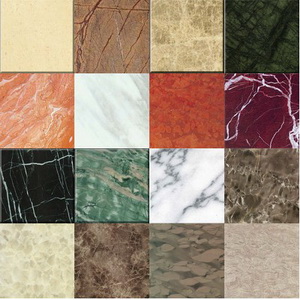Knowing the exact differences between the different types of tiles is a feat that very few people have been able to accomplish. This is justifiable in that the variety of tiles keep growing each day with the advent of new tile manufacturing techniques. Porcelain and marble tiles make just one pair among many other pairs of distinct tiles that have many people stumped on exactly what they are, how they are used and how one can tell one from the other. What follows is a description of the differences between porcelain and marble tiles. The differences are tackled in terms of the distinct categories.
- Physical Properties
 When you think of physical properties you should have in mind the characteristics that can be identified through the sense of sight and touch as well as being provable through some form of test. With this in mind, marble is a material whose surface is generally cream to grayish white in color with darker ingrained pattern visible beneath the surface. Thus marble can be said to exhibit a limited translucency.
When you think of physical properties you should have in mind the characteristics that can be identified through the sense of sight and touch as well as being provable through some form of test. With this in mind, marble is a material whose surface is generally cream to grayish white in color with darker ingrained pattern visible beneath the surface. Thus marble can be said to exhibit a limited translucency.
A porcelain surface is white to grayish white in color without even the slightest hint at translucency. The polished surfaces of both are smooth to the touch and are quite reflective. It is possible to scratch both surfaces with a sharp object which leaves a permanent etch mark. However it would be much harder to scratch the surface of enameled porcelain tile.
- Manufacture
Marble is obtained from natural occurring stone quite similar in appearance to limestone. This comes about because both natural occurring materials have calcium carbonate as the main component. Slabs of marble are cut from the boulders of the material quarried from marble bearing hillsides using diamond wire. These slabs are what is then cut up into the tiles and marble slabs used in construction and renovation from London Tiles.
Porcelain on other hand is made up of other basic ingredients which include refined clay and metal oxides. The metal oxides are what give colored porcelain tiles their color. Other components added to the basic mixture are aimed at improving one of more physical aspect of the porcelain tiles formed from it. In the first stages porcelain is in essence a lump of clay that is flattened into wet slabs. The slabs are then cut into square shaped pieces which end up as the porcelain tiles when fired in a kiln.
- Price
Marble tiles are quite expensive compared to porcelain tiles in that the method of their manufacture is both costly and time intensive. Furthermore a you have the choice of buying marble in form of slabs which might to a lot cheaper that buying marble tiles. However porcelain only comes in standard tile size.
Conclusion;
You should be now able to easily differentiate between porcelain and marble tiles by using the information provided above as a guideline,
See more about Tiles on Facebook
